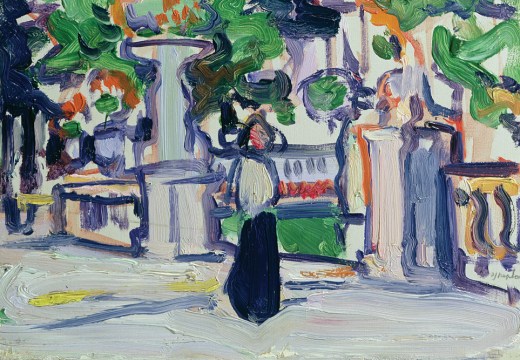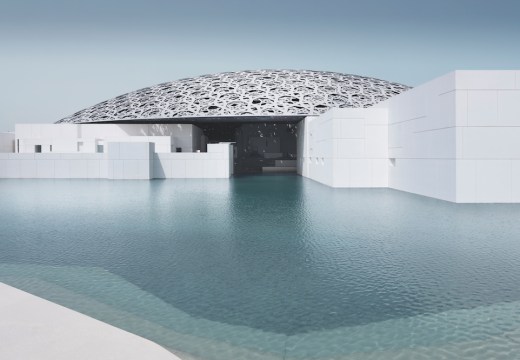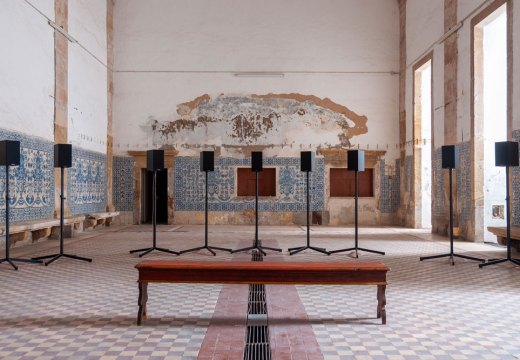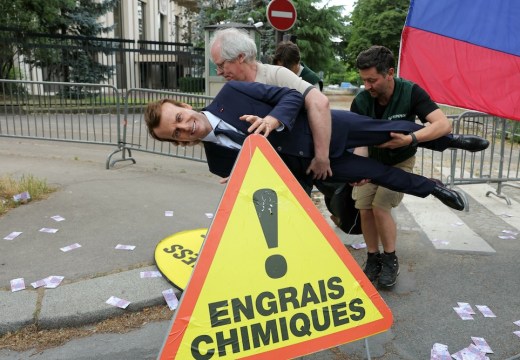Over London’s Old Master sales this month hangs the fusty smell of a rather recondite controversy. Sotheby’s is offering a version of Titian’s Venus and Adonis that it calls ‘the most important painting by the artist to be offered at auction this century’, with an estimate of £8m–£12m. The problem is that no-one can agree whether – or to what degree – the work is by the master’s own hand.

Venus and Adonis (1555–57), Titian and workshop. Sotheby’s London (est. £8m–£12m)
The painting itself is one of numerous known versions of a composition that certainly ranks among the most significant of Titian’s career. It is one of the earliest of the six great poesie paintings made for Philip II of Spain in the 1550s and early 1560s – the version now in the Prado, documented in correspondence with Philip in 1554, is generally agreed to be the earliest of the surviving versions. Titian called them poesies as a way of staking the claim that these paintings vied with their sister art. The scene of Venus and Adonis – taken from Ovid, with the naked goddess of love, struck in error by Cupid’s arrow, clinging in terror and longing to the young boy in an effort to prevent him from embarking on the hunt that will kill him – is one of high drama, pathos and eroticism. There have been suggestions that Shakespeare knew the painting, and his narrative poem of the same name (1593) is just as full of ‘hot desire’.
The version now offered by Sotheby’s has long been known as the ‘Lausanne’ version, after the private collection in which it has been housed since 1984. It was once proposed that this may have been the version first sent to Philip in 1554, about which he complained of a fold made in packing – but this theory has been pretty well discredited, with the work now held as derivative of one of the other versions. The work failed to sell at Christie’s in 1998, for an estimate of £1m–£1.5m; since then, as George Gordon, global co-chairman of Old Master paintings at Sotheby’s has suggested, ‘recent research […] has revealed the full extent of the artist’s hand in the execution of this painting’. The research in question was borne out of technical analysis begun in 2015, and published by Thomas Dalla Costa in 2019. It suggests that Titian’s participation in both the process of composition and the actual act of painting is argued by the presence of pentimenti and the inclusion of certain elements not present in previous versions – in particular the background vignette, which presents a premonition of Adonis’ death, gored by a boar, illuminated by a beam of light that appears to be cast from Venus herself as she ascends the heavens in a chariot pulled by swans (it is the only version to include both of these details).
Yet others aren’t so sure. As Charles Hope, former director of the Warburg Institute in London and an expert on Titian, told the Art Newspaper: ‘Why would the most famous painter of his day, at the height of his success, waste his time on painting the same picture again and again?’ Sotheby’s has attributed the work to Titian ‘and workshop’, with a date of 1555–57 (so immediately in the wake of the Prado version) and an estimate of £8m–£12m. If this is indeed ‘the best poesia still in private hands’, this figure does, as Hope points out, seem on the low side; Gordon has suggested it is influenced by the £7.4m paid by the Getty for a similarly dated and attributed version, back in the early 1990s. It will be extremely interesting to see which collector or institution might be willing to take the punt on 7 December.

Still life with a basket of fruit with two plates of fruit and birds, all on a stone ledge (1622), Juan van der Hamen y León. Sotheby’s London (est. £300,000–£500,000)
The same evening sale brings a number of more straightforward pleasures, in particular those courtesy of the Spanish collector Juan Manuel Grasset, who died in 2020 at the age of 93. His collecting focused on Dutch Golden Age paintings – among them are a number of exceptional landscapes. However, the real strength of the collection is in the depth of its still lifes, ranging from floral arrangements and fruit baskets to banquet tables heaving with abundance. The top lot (of the still lifes) is Jan Davidsz. de Heem’s Still life of flowers in a glass vase with insects and fruits in a stone niche (est. £1m–£1.5m), but perhaps the most captivating is by Juan van der Hamen y León, who was born in Madrid to a Flemish family and worked at the court of the Spanish Habsburgs. In Still life with a basket of fruit with two plates of fruit and two birds, all on a stone ledge (est. £300,000–£500,000), the birds are depicted mid-flight, or else coming into land on the fruit basket, dramatically emphasising the stillness of each individually, painstakingly highlighted fruit. It’s enough to set the heart aflutter.

The Reading Party (1735), Jean-François de Troy. Christie’s London (est. £2m–£3m)
Vying for the top lot at Christie’s the following evening are an autograph portrait by Van Dyck of Henrietta Maria – a version of the work is now in the Met – and something perhaps more unusual. Jean-François de Troy is not, today, a name to conjure with – certainly not to the degree of his contemporary Antoine Watteau. But, as Watteau invented his fêtes galantes, De Troy was likewise revered in his day for the creation of a new genre. His tableaux de monde (‘fashionable pictures’) are small-scale, meticulously rendered depictions of nobility in opulent attire and at leisure; the very image of the Ancien Régime. The Reading Party is distinguished by the outrageousness voluminous of the ladies’ dresses and for the comical attentiveness of the reclining fop; both it and the Van Dyck carry low estimates of £2m.

Still Life with Earthenware Vessel and Blue Ewer (1922), Mark Gertler. Chorley’s Auctioneers (est. £6,000–£8,000)
On 1 December, Grisebach auctioneers in Berlin scored a great success, breaking the record for any work of art sold at auction in Germany with the €20m it achieved for Max Beckmann’s late Self-portrait Yellow-Pink. A considerably smaller-scale, but nonetheless pleasing, coup secured by a local auction house arrives on 5 December at Chorley’s. The Gloucester auction-house has turned up an entirely unknown painting by Mark Gertler, whose reputation has perhaps struggled to hold its own in recent years alongside that of Slade contemporaries such as Paul Nash or Stanley Spencer, but whose singular, frequently unsettling talent and vision are unarguable. Still Life with Earthenware Vessel and Blue Ewer was painted during a sojourn in France in 1922 and it is markedly gentler than Gertler’s more characteristic works – although with the pronounced tilt of the table, the viewer might worry that the earthenware jug, beautifully rendered with a kind of monumental solidity, may well be about to crash to the floor. It comes with an enticing estimate of £6,000–£8,000.














![Masterpiece [Re]discovery 2022. Photo: Ben Fisher Photography, courtesy of Masterpiece London](https://apollo-magazine.com/wp-content/uploads/2022/07/MPL2022_4263.jpg)
‘A revolutionary flame burned bright within him’: David Bindman (1940–2025)